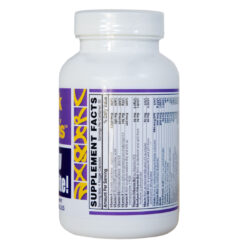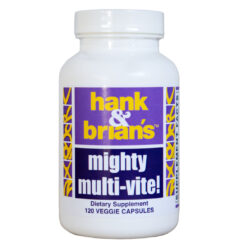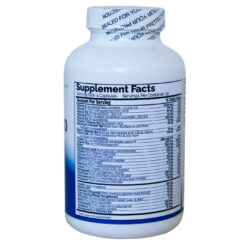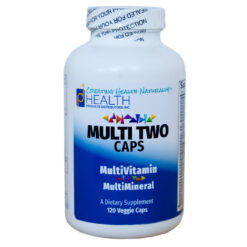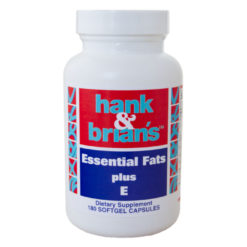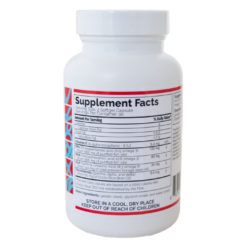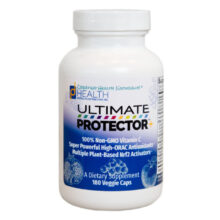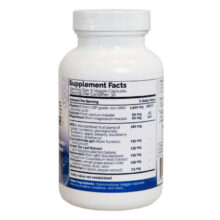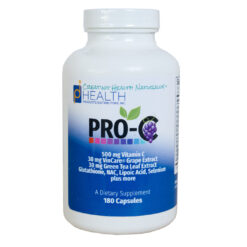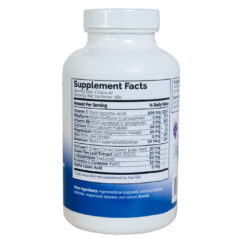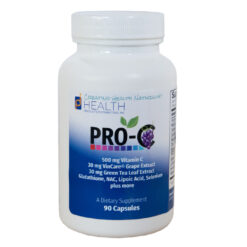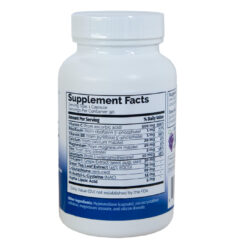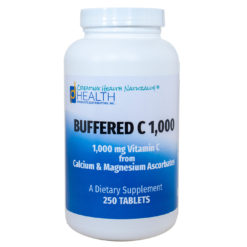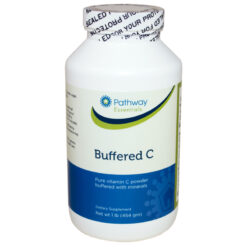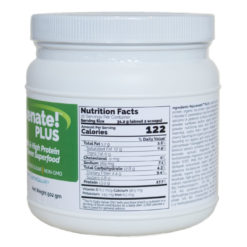Dear Reader,
I’ve been formulating nutritional supplements for more than 30 years and have watched thousands of customers and friends dramatically improve their health. Over the years I’ve truly seen what works! The most consistent results I’ve ever observed come from those who build their nutrition mindfully and strategically. That may sound time-consuming, but it’s not. In fact, I’ve created a very simple program to guide you.
All supplementation programs should begin with Foundational Supplements. I call them “foundational” because they provide basic nutritional cornerstones required to support long-term health. In fact, you can significantly improve your health over time by taking supplements from just these four categories.
Once you’ve established solid foundational nutrition, then you may consider adding additional supplements that address specific nutritional issues, but I always advise starting with the foundation.
FOUNDATIONAL SUPPLEMENTS
CREATE HEALTH NATURALLY!
Foundational Supplements consist of these four categories:
- A high-quality multivitamin. A good multivitamin provides high levels of the basic health-building nutrients.
- Essential fats. The body requires specific types of fats and fatty acids to perform critical functions.
- Vitamin C (with other antioxidants, especially bioflavonoids.) The benefits of Vitamin C can’t be overstated. It’s simply essential to sustaining life.
- High-RNA superfoods. Dietary RNA is lesser known but absolutely essential. Dietary nucleic acids (RNA and DNA) are critical for healing and health. You’ll learn more about this below.
FOUNDATIONAL SUPPLEMENTS
PROVIDE THE MOST ESSENTIAL NUTRIENTS
It’s not a mystery why foundational supplements are needed. Throughout the past 70 years, nutritional scientists have deeply explored fundamental questions about the essential nutrients the body needs to function properly. In addition, scientists have learned much about the nutrients the body must acquire from outside sources because it cannot synthesize them.
The current scientifically accepted list of essential nutrients includes thirteen vitamins, more than twenty minerals, two essential fatty acids, nine essential amino acids, a source of calories (includes protein, carbohydrates, and fats), water, oxygen, and sunlight. We add dietary nucleic acids (especially RNA) based on the reasearch of Dr. Benjamin S. Frank. Daily values (DVs) are established for most of these substances, but represent only minimum amounts needed to avoid disease. Consequently, these values do not address amounts needed for optimal health.
It is no surprise that optimal values for essential nutrients are nearly always significantly higher than established daily values. The minimal amounts of nutrients required merely for survival are not sufficient to sustain vibrant health. In fact, daily values might be better described as “deficiency values” because they hover dangerously close to actual deficiency levels (depending on the individual) and most likely describe a state of “subclinical deficiency” whereby deficiency symptoms are temporarily masked.
TABLE 1 — US DAILY VALUE FOR 33 ESSENTIAL NUTRIENTS
| Nutrient | Daily Value | Nutrient | Daily Value | |||
| Total Fat | 65 | g | Thiamin (Vitamin B1) | 1.2 | mg | |
| Saturated Fatty Acids | 20 | g | Riboflavin (Vitamin B2) | 1.3 | mg | |
| Cholesterol | 300 | mg | Niacin (Vitamin B3) | 16 | mg | |
| Sodium | 2,300 | mg | Vitamin B6 | 1.7 | mg | |
| Chloride | 3,400 | mg | Folate | 400 | mcg | |
| Potassium | 4,700 | mg | Vitamin B12 | 2.4 | mcg | |
| Total Carbohydrates | 300 | g | Biotin | 30 | mcg | |
| Dietary Fiber | 25 | g | Pantothenic Acid | 5 | mg | |
| Protein | 50 | g | Phosphorus | 1,250 | mg | |
| Vitamin A | 5,000 | IU | Iodine | 150 | mcg | |
| Vitamin C | 90 | mg | Magnesium | 420 | mg | |
| Calcium | 1,300 | mg | Zinc | 11 | mg | |
| Iron | 16 | mg | Copper | 0.9 | mg | |
| Vitamin D | 1,200 | IU | Manganese | 2.3 | mg | |
| Vitamin E | 15 | mg | Chromium | 35 | mcg | |
| Vitamin K | 120 | mcg | Molybdenum | 45 | mcg | |
| Choline | 550 | mg | Selenium | 55 | mcg | |
MAJOR REASONS ESSENTIAL DIETARY SUPPLEMENTS ARE NECESSARY
Foundational nutritional supplements provide important nutrients in amounts not easily available in the diet. This relates to the fact that our needs for nutrients have never been greater. Our needs are greater due to many factors, including diets high in nutrient-depleted and processed foods (refined carbohydrates), and low in fresh vegetables and fruits. This actually describes the so-called “Standard American Diet,” or “SAD,” which has been implicated for its negative health effects.
Some reasons dietary supplements are necessary include the facts that 1) most crops are grown in nutrient-deficient and/or depleted soils using methods of industrial agriculture that fail to replenish nutrients, and poison the soil (and therefore foods) with toxic pesticides, herbicides, and chemical fertilizers, 2) food processing methods damage, destroy, or remove many essential nutrients, 3) increased demands by the body due to greater needs for nutrients (relating to stress, pollution, greater needs for detoxification, and other factors endemic to modern society), 4) biochemical individuality resulting in greater needs for certain nutrients depending on the unique biochemistry (genetic profile) of an individual. Biochemical individuality means that someone may require many times the recommended US Daily Value for specific nutrients. Consequently, one person may need hundreds of times the amount of a nutrient compared to another person’s requirement.
TABLE 2 — NUTRIENT LOSSES FROM FOOD PROCESSING (LOSS %)
| MINERAL | LOSS % | NUTRIENT | LOSS % | |
| Calcium | 60% | Strontium | 95% | |
| Chromium | 40% | Zinc | 78% | |
| Cobalt | 89% | Vitamins B1, B2, and B3 | 72–81% | |
| Copper | 68% | Vitamin B6 | 72% | |
| Iron | 76% | Pantothenic Acid | 50% | |
| Magnesium | 85% | Folate | 67% | |
| Manganese | 86% | Vitamin E | 86% | |
| Molybdenum | 48% | Linoleic Acid | 95% | |
| Phosphorus | 71% | Alpha-Linolenic Acid | 95% | |
| Potassium | 77% | Protein | 33% | |
| Selenium | 16% | Fiber | 95% | |
| Source: Fats That Heal, Fats That Kill by Udo Erasmus | ||||
A review of nutritional studies indicates that deficiencies of most nutrients among individuals range from 25%–95% depending on the nutrient. Such major deficiencies are less surprising given studies indicating that nutrient losses from the processing of foods range from 20%–95%, and average 70%–80%. For example, losses due to food processing are about 85% for magnesium and 95% for essential fats (omega-3 and omega-6). In addition, mineral levels measured in plants grown in poor soils (a result of inadequate agricultural practices) are as low as 5% of the mineral levels measured in plants grown in nutrient-rich soils.
TABLE 3 — NUTRIENT DEFICIENCIES AMONG INDIVIDUALS (% DEFICIENCY)
(FROM NATIONAL SURVEYS AND CLINICIAN ESTIMATES)
| From National Surveys | From Clinician Estimates | |||
| Nutrient | % Deficiency | Nutrient | % Deficiency | |
| Calcium | 68% | Biotin | 10% | |
| Folate | 10+% | Chromium | 90% | |
| Iron | 57% | Copper | 85–90% | |
| Magnesium | 75% | Manganese | 20–30% | |
| Phosphorus | 27% | Pantothenic Acid | 25% | |
| Vitamin A | 50% | Selenium | 50–60% | |
| Thiamin (Vitamin B1) | 45% | Silicon | 30% | |
| Riboflavin (Vitamin B2) | 34% | Vitamin D | 70% | |
| Niacin (Vitamin B3) | 33% | Vitamin E | 20–40% | |
| Vitamin B6 | 80% | Vitamin K | 15% | |
| Vitamin B12 | 34% | Essential Fatty Acids | 95% | |
| Vitamin C | 41% | Zinc | 35–60% | |
| Source: Fats That Heal, Fats That Kill by Udo Erasmus | ||||
Complicating this picture is the fact that nutritional requirements change during the year due to environmental circumstances. Changing seasons, environments, air/water supply, etc. mean that an individual’s need for nutrients typically changes (more Vitamin D needed in the winter, more nutrients needed to cope with pollution associated with urban environments or stress, etc.). Nutrient density of foods also varies by location and season. The availability of nutrients in foods can vary substantially due to season, geographic factors, and growing methods.
All these factors add up to indicate the difficulty of ensuring optimal nutrient status without foundational supplements. Because the need for nutrients is greater than ever for most people, the need for nutritional supplementation is also greater than ever. Nutritional supplements provide an effective (and cost-effective) means to ensure the high levels of nutrients required to build, sustain, and maintain optimal health.
THE FUNCTION OF THE HUMAN BODY
MIGHT BE LIKENED TO AN AUTOMOBILE FACTORY
An important consideration is that hundreds of nutrients interact in our bodies simultaneously. Considering that the recommended (minimum) amount of a single nutrient rarely represents optimal intake, adverse effects can increase when a broad range of nutrients is present in suboptimal amounts.
The function of the human body might be likened to an automobile factory. If a factory is designed to produce 100 vehicles per day, then the factory must be supplied with at least minimum amounts of all essential raw materials to make this happen. In this case, incorrect amounts of raw materials, for example, 40 tires, 91 transmissions, 67 drive trains, 13 exhaust pipes, etc. would never allow optimal production. Important relationships among parts must be honored for the entire system to function properly.

Like an automobile factory, the human body needs proper amounts of critical “raw materials” to perform at peak levels. However, the need to obtain appropriate “materials” in correct amounts is arguably far more relevant for the extremely complex human body. In this regard, scientific studies on nutrients perform a disservice when they fail to consider complex interactions among nutrients in the body. Minimum levels of nutrients can only lead to minimum health. Following the analogy of an auto factory, the body cannot create optimal health from insufficient raw materials.
In fact, we have an accurate picture of what levels of nutrients support optimal body function. We are aided in this knowledge by solid scientific studies. It is established that basic nutrients provided by foundational supplements confer immense benefits for health. Indeed, basic nutrients have proven remarkably effective for improving health, especially relative to their cost. Foundational nutritional supplements are far less costly than pharmaceutical drugs or the medical procedures used to treat health conditions related to nutrient deficiencies, which often can be prevented by dietary supplements.
In addition, natural nutrient substances exhibit extremely low toxicity. Most vitamins, for example, demonstrate low toxicity (even at levels significantly higher than official daily values). The “2008 Annual Report of the American Association of Poison Control Centers’ National Poison Data System (NPDS): 26th Annual Report” published in Clinical Toxicology (2009) indicated not a single fatality caused by nutritional supplements in the US that year. This underscores the safety of vitamins, minerals, herbs, and amino acids. While this figure may seem remarkable considering that more than half the US population takes daily nutritional supplements, it confirms the safety of natural nutrient substances. Indeed, essential nutrients are safe and effective precisely because they naturally work together within the body to create health.
Given the critical importance of essential nutrients for health and their safety and effectiveness, foundational supplements are an ideal means to get optimal levels of nutrients not readily available from other sources. The fact that a majority of individuals are deficient in at least some nutrients means that foundational supplements can play a major role in creating health.

FOUNDATIONAL SUPPLEMENTS:
THE FOUR CORNERS OF A FIRM HEALTH FOUNDATION
MULTIVITAMINS
Multivitamin capsules often are better absorbed than tablets (especially if you are older or have compromised digestion). Tablets are more economical than capsules, and may be more suitable for vegetarians/vegans.
ESSENTIAL FATS
Select one or more essential fatty acid supplements (from list below). Essential Fats Plus E is contained in a large soft gel capsule that may be suitable for adults and/or those who can easily take large capsules. For those needing less the capsule may be opened with pin and only a portion of the ingredients may be taken. For vegetarians and vegans, we suggest chia seeds, one of nature’s richest plant sources of essential fats (omega-3 and omega-6).
VITAMIN C / ANTIOXIDANT SUPPLEMENTS
It’s best to take a formula like PRO-C™ or Ultimate Protector+™ that provides substantial levels of antioxidants, including bioflavonoids. This is because antioxidants make Vitamin C more effective (and vice versa) and the combination of these nutrients more effectively quenches free radicals.
REJUVENATE!™ HIGH-RNA SUPERFOODS
REJUVENATE!™ superfoods leverage the unique powers of dietary nucleic acids (RNA, DNA) for greater health, healing, and longevity. Each of our REJUVENATE!™ formulas is unique. All provide high levels of nucleic acids (at least 340 mg per serving), yet offer varying amounts of protein, vitamins/minerals, greens (chlorella, spirulina), and other nutrients.
To learn more about the differences among these four unique superfood formulas, and to discover which one(s) are right for you, please see our REJUVENATE!™ Side-By-Side Comparison Table.
THE FOUR FOUNDATIONAL SUPPLEMENTS
EXPLAINED FURTHER
All four types of Foundational Supplements are essential for specific reasons. Each is critical in supporting specific functions in the body.
A HIGH-QUALITY MULTIVITAMIN
A high-quality, high-potency multivitamin is the single most important supplement you can take. A good multivitamin ensures you receive important nutrients not always available in optimal amounts in foods. Taking a multivitamin helps guarantee uptake of nutrients that are not readily available because modern diets have strayed far from traditional diets. In addition, modern lifestyles create far greater demands for critical nutrients even as many nutrients are increasingly less available from foods. Multivitamins help break the cycle of deficiency and degeneration.
Critical nutrients provided by a good therapeutic multivitamin formula include a wide range of essential vitamins, minerals, and cofactors. Such a formula will usually include trace minerals, fat-soluble vitamins (A, E, D, and K), coenzyme B vitamins, magnesium, or other nutrients known to be deficient in the diets of most individuals.
Important factors to consider when looking for a good multivitamin include high-potency, forms, completeness, balance, assimilability (ease of uptake and rapid assimilation), ease of use (convenience), avoidance of unnecessary or harmful excipients and/or fillers, and various other factors.
High-potency is important because for most nutrients, the so-called “daily value” is simply inadequate for most people. Most individuals need many times the daily value of vitamins for good health. This is because daily values are established based on minimum amounts required for sustain life rather than the optimal amounts needed for good health.
As noted, studies of biochemical individuality show that individuals may require many times greater amounts of specific nutrients than are needed by the average person. Because most vitamins (especially water soluble ones) are essentially non-toxic even in relatively large doses (i.e., hundreds or sometimes thousands of times the daily value), it pays to provide your body with larger amounts of critical nutrients that it may require because you may not be an “average” person.
Complicating this picture is the fact that individuals needs for specific nutrients vary widely. Thus, for example, one person’s need for Vitamin C may be somewhat higher than average, yet the same person’s need for Vitamin D may be significantly higher than average. In addition, the need for Vitamin C for any given individual can vary widely depending upon the stresses (infections, tissue damage, emotional stress) experienced at any given time.
The proper forms of the nutrients are another critical factor. While forms have not always been a prime consideration (either of consumers or formulators), they are critically important. Forms are worthy of attention because we know that the form of a vitamin or mineral can make a major difference in terms of how it assimilated and used in the body.
For example, Krebs cycle bionutrients (i.e., mineral carriers, such as citrates, malates, alpha-ketoglutarates, succinates, or fumarates) are known to be superior precisely because they are the forms naturally recognized and utilized in the body. This is because these forms are used in the Krebs cycle (or citric acid cycle) that is part of the metabolic pathway used to generate energy (ATP) from nutrients in foods. In contrast, elemental forms of minerals and/or forms that are not part of the Krebs cycle may be more difficult to assimilate because they must be converted into forms the body can use. The biological cost is reduced bioavailability, as well as cellular energy expense and time required for metabolic conversion. As you can see, forms matter for health!
Other important factors include completeness and balance. Completeness is important in a multivitamin because the body requires a wide range of nutrients working together to create and sustain health. Many multivitamins are neither complete nor balanced. This relates partly to the fact that multivitamins are often not designed with an understanding of nutrients, forms, or amounts needed for health. Consequently, many commonly available multivitamins incorporate less effective forms, inadequate amounts, and improper ratios of nutrients. This reflects a general lack of understanding by formulators about how nutrients work together to build and sustain health. In contrast, supplements are available that provide completeness and balance.
HPDI offers several high-quality, balanced, and complete multivitamins providing easily assimilated forms of nutrients in optimal amounts. These include Hank & Brian’s Mighty Multi-Vite!™, Multi Two caps or tabs, and Mini Multi (100% free of excipients). We recommend our capsule formulas because they are the easier to assimilate. However, our tablet formulas are both effective and cost-effective. The Mini Multi capsule contains no additives and is designed especially for chemically and environmentally sensitive individuals. In addition, children benefit greatly from a multivitamin, and for them we offer our Chewable Kids Mighty-Multi!.
A COMPLETE ESSENTIAL FATS FORMULA
Many people understand the need to take supplemental multivitamins. The need for essential fatty acids (EFAs) has gained increased attention recently, and it is no less important. More people are consuming fish, fish oils, and vegetarian sources of essential fats, including chia seeds. However, the need for supplementing diet with essential fats to ensure adequate daily intake has never been greater than today.
There are two basic essential fats: alpha-linoleic acid (omega-3) and linolenic acid (omega-6). Other fats are sometimes included as being essential fats, including gamma-linolenic acid (GLA), an important omega-6 fatty acid, and eicosapentanoic acid (EPA) and docosahexanoic acid (DHA), important omega-3 fatty acids. Although these other fats can be made in the body from alpha-linolenic acid (ALA) and Linoleic acid (LA), it is much more efficient to provide them directly.
 Essential fats are considered “essential” because they are needed for biological processes (i.e., they are required to sustain life) rather than acting only as a food-based source of energy (as do many other non-essential fatty acids). Humans, therefore, must ingest essential fatty acids both for survival and for good health.
Essential fats are considered “essential” because they are needed for biological processes (i.e., they are required to sustain life) rather than acting only as a food-based source of energy (as do many other non-essential fatty acids). Humans, therefore, must ingest essential fatty acids both for survival and for good health.
Essential fats play multiple roles in the body and serve many different functions. These functions include being modified to make substances that affect pain and inflammation; regulating steroid production and hormone synthesis; regulating pressure in the eyes, joints and blood vessels; mediating the immune response; regulating smooth muscle and autonomic reflexes; are needed for oxygen transport from red blood cells to tissues; are necessary for kidney function and fluid balance; preventing clumping of red blood cells; regulating mood and depression, and regulating nerve transmission.
Every cell and organelle within the cells are encased and protected by membrane made of phospholipids. A major component of these phospholipids are essential fatty acids that control membrane fluidity and the ability to pass important nutrients into the cells and toxins out of the cells. Without adequate essential fats the cell membranes can become rigid and dysfunctional.
The fish oils in our essential fatty acid supplements are molecularly distilled for ultra-high purity. Every batch of fish oil is tested to ensure freshness and guaranteed to contain insignificant levels of heavy metals, PCBs, pesticides, and other organic chemical contaminants. These supplements do not contain hydrogenated oils, artificial colors, or artificial preservatives.
We also recommend chia and flax seeds, two of nature’s best plant sources of alpha-linolenic acid (ALA) and linoleic acid (LA). Chia and flax seeds make an excellent alternative source of EFAs for vegetarians, vegans, and individuals not inclined to use fish oil products.
VITAMIN C / ANTIOXIDANT FORMULA
Vitamin C is legendary for its healing capacities. Yet, it is notable that despite numerous studies and accolades by nutritionists, it remains underutilized by mainstream medicine and is completely under-appreciated for the healing powerhouse it represents.
 Vitamin C is a foundational nutrient because of its important role in creating and sustaining optimal health. Vitamin C not only is a potent antioxidant, but also a powerful immune builder/anti-viral, cholesterol controller, and connective tissue builder and strengthener. In fact, no other vitamin or nutrient can take its place in terms of what it can contribute to human health, longevity, and well-being.
Vitamin C is a foundational nutrient because of its important role in creating and sustaining optimal health. Vitamin C not only is a potent antioxidant, but also a powerful immune builder/anti-viral, cholesterol controller, and connective tissue builder and strengthener. In fact, no other vitamin or nutrient can take its place in terms of what it can contribute to human health, longevity, and well-being.
Ever since Linus Pauling’s Vitamin C and the Common Cold, Vitamin C has held a place of esteem among nutritional scientists and consumers of Vitamin C products. Pauling went on to present further studies and to write his bestseller How to Live Longer and Feel Better. Vitamin C plays a major role both in his discussion of vitamins and in the supplement regimens he recommends.
In nature, Vitamin C is always combined with bioflavonoids. Bioflavonoids (such as rutin, quercetin, catechins, anthocyanidins, and oligomeric proanthocyanidins (OPCs)), work synergistically with Vitamin C to create powerful antioxidant effects, counteract inflammation, and strengthen connective tissues. In addition, Vitamin C and bioflavonoids combine with other antioxidants (including glutathione, R-lipoic acid (RLA), and selenium) in a process called “redox cycling.” In this process, antioxidants protect and “spare” each other, thereby allowing for significantly increased antioxidant protection in the body.
Our Vitamin C products include some of the most innovative formulas available.
ULTIMATE PROTECTOR™ is our most powerful and complete formula for total cell protection. It is a unique combination of antioxidants, Nrf2 activators (that activate the body’s own internal antioxidant enzyme systems), and Vitamin C. This superb formula provides an ORAC6.0™ value of 968,000 units per recommended serving (six capsules)! This is the highest ORAC6.0 value we know of among any antioxidant products. That means total antioxidant protection and free-radical quenching of all five types of free radicals.
PRO-C™ is our signature encapsulated Vitamin C antioxidant formula that contains 500 mg of buffered Vitamin C; grape extract (from seed, skin, and stem); green tea extract; NAC; reduced glutathione; R-lipoic acid (RLA); selenium, and other synergistic nutrients. It is best to take a formula like PRO-C™ that provides substantial levels of antioxidants. This is because antioxidants make Vitamin C more effective (and vice versa) and the combination of these nutrients more effectively quenches free radicals.
Our buffered Vitamin C products (Buffered Vitamin C tabs and Buffered C powder) provide a cost-effective means to obtain therapeutic levels of Vitamin C. However, taking buffered Vitamin C without additional antioxidants does not provide the synergy afforded by bioflavonoids, polyphenols, and antioxidants found in PRO-C™ and ULTIMATE PROTECTOR™. We therefore recommend our most basic buffered Vitamin C products (tabs and powder) as effective adjuncts to our complete Vitamin C Antioxidant formulas.
REJUVENATE!™ SUPERFOODS
(DIETARY NUCLEIC ACIDS)
REJUVENATE!™ superfoods are the most recent addition to HPDI’s foundational supplements. Our development of high-RNA superfoods was inspired by the work of Dr. Benjamin S. Frank. After more than twenty years of clinical research, Dr. Frank notably asserted in Nucleic Acid Nutrition and Therapy (1977) that nucleic acids are “essential nutrients of human beings,” as distinct from non-essential, accessory nutrients. He considered nucleic acids and nucleotides an essential dietary category, i.e., as being nutrients just as essential for humans as vitamins, minerals, proteins, carbohydrates, and lipids.
Dr. Frank acknowledged the body’s capacity to synthesize some nucleic acids, yet cited marked improvements in degenerative conditions as the clearest evidence for nucleic acids as essential nutrients that must be obtained from the diet or dietary supplements. In particular, he noted the health effects resulting even from relatively small intakes of nucleic acids (energizing effects, anti-anoxia effects, rejuvenation, and greater vitality). Dr. Frank found he could not obtain such improvements in his subjects by increasing only the intake of vitamins, minerals, proteins, or other essential nutrients.
Dr. Frank was the first scientist to conclude that nucleic acids are essential nutrients (and especially useful for rejuvenation), as distinct from other micronutrients. He notably wrote in Nucleic Acid Nutrition and Therapy:
[N]ucleic acids are an essential nutrient in our daily diets, and…optimal health and reduced aging are clearly related to their intake, more than to any other nutrient. Nucleic acids in our diets are of paramount importance for the repairing of molecular and gross tissue degeneration, and for combating the process of aging by simple, effective and essentially non-toxic, natural means. (116-117)
In addition, Dr. Frank describes the processes by which nucleic acids dramatically increase cellular energy. Nucleic acids boost energy levels by significantly increasing production of the “high-energy” molecule ATP (adenosine triphosphate). The body requires the energy from ATP for many purposes, including cellular and tissue repair, metabolism, digestion, building a strong immune system, and many other processes.
While his groundbreaking research focuses on nucleic acids, Dr. Frank’s writings clearly indicate that he understands the importance, therapeutic value, and “essentialness” of vitamins for health. He notes that in order to achieve the best health, current scientific evidence favors dosages far higher than minimum recommended amounts. In fact, in his practice and nucleic-acid research studies documented in his bestseller Dr. Frank’s No-Aging Diet, he observes that many patients who benefit from dietary nucleic acids also receive significant benefits from nutritional supplements:
I have seen patient after patient show improvement on nucleic acids without vitamin supplements, but greater improvements with them. Combine [nutritional supplements and dietary nucleic acids] … and the results add up to more youthful appearance, more vigor, and a fundamental improvement in health. The conclusion is unavoidable that nucleic acids are vitally essential nutrients. (31)
Dr. Frank’s statement regarding the synergistic effects of vitamins and dietary nucleic acids both supports his conclusion that nucleic acids are essential nutrients, and places them alongside vitamins as nutrients he describes as “essential.” In this way, Dr. Frank confirms the intrinsic value of vitamins and nucleic acids — especially when they are used together — to produce results exceeding the benefits available from dietary nucleic acids by themselves.
Our observations and experience confirm Dr. Frank’s conclusion that dietary nucleic acids are essential nutrients required for health. We developed our REJUVENATE!™ superfoods to provide dietary nucleic acids in sufficient quantity to meet the body’s needs and support optimal health. We receive many letters from our customers about the benefits they’ve received from using our high-RNA REJUVENATE!™ superfoods.
All of our REJUVENATE!™ superfoods contain at least 340 mg of RNA/DNA (per serving) from a variety of vegetable sources. In addition, they all provide nutrients such as Vitamin B12, folate, magnesium, and Vitamin C that support the body in its efforts to internally build nucleic acids. Furthermore, they all contain superfoods that provide additional key nutrients and help to optimize metabolism and health. We have prepared several detailed comparison charts to help you determine which REJUVENATE!™ superfood formula(s) may be most appropriate for you.
REJUVENATE!™ PLUS and REJUVENATE!™ Berries & Herbs are the most popular, best-tasting, and most nutritionally complete. They offer high levels of protein, a complete multivitamin, some essential fats, fiber, and antioxidants. REJUVENATE!™ Berries & Herbs contains no greens and is known for its delicious berry flavor. REJUVENATE!™ PLUS is our “sweet greens” formula combining great taste, superior nutrition, and fewer greens than our original formula. This adds up to delicious flavor, smooth texture, and reduced rates of detoxification (compared to original REJUVENATE!™).
REJUVENATE!™ (original greens) is especially useful for rapid detoxification (because it contains the highest levels of chlorella), and does not contain added protein or a multivitamin complex.
FOUR FOUNDATIONAL SUPPLEMENTS = POWERFUL SYNERGY FOR HEALTH
The means by which all four types of foundational supplements succeed relates less to the fact that each provides an essential piece of the nutrition puzzle, but rather to the fact that when all Foundational Supplements are taken together, their benefits exceed the benefits provided by the individual components. This is a primary reason I emphasize foundational nutritional supplements as a starting place for the creation of optimal health. Foundational Supplements work together synergistically to leverage each other in ways that exceed the individual effects.
TABLE 4 — RATIO OF NUTRIENTS PROVIDED BY
SAMPLE FOUNDATIONAL PROGRAM TO DAILY VALUE (DV)
Foundational Supplements offer significant levels of essential nutrients. Table 4 provides an example of nutritional benefits available from a program of Health Products Distributors’ most commonly used foundational supplements. The table compares levels of 35 nutrients in Foundational Supplements to the Daily Value (DV). The final columns indicate total nutrients and ratio of these nutrients to DV. It is clear that foundational supplements help optimize nutrient intake and provide high levels of nutrition that would be difficult (or impossible) to obtain solely though diet. (See “Explanatory Notes” below).
| Nutrient | Daily Value (DV) | Mighty Multi-Vite |
PRO-C | Omega Plus |
Rejuvenate!™ Berries & Herbs |
Total in Program |
Program Ratio to DV |
|
| Total Fat | 65 g | 0 | 0 | 1.0 | 4.0 | 5.0 | 0.077 | |
| Saturated fatty acids | 20 g | 0 | 0 | 0.2 | 0.5 | 0.7 | 0.035 | |
| Cholesterol | 300 mg | 0 | 0 | 0 | 0 | 0 | 0 | |
| Sodium | 2,400 mg | 0 | 0 | 0 | 50 | 50 | 0.02 | |
| Chloride | 3,400 mg | 0 | 0 | 0 | NA | NA | NA | |
| Potassium | 3,500 mg | 99 | 0 | 0 | >100 | >199 | >0.06 | |
| Total carbohydrates | 300 g | 0 | 0 | 0 | 15.0 | 15.0 | 0.05 | |
| Dietary fiber | 25 g | 0 | 0 | 0 | 6.0 | 6.0 | 0.24 | |
| Protein | 50 g | 0 | 0 | 0 | 12 | 12 | 0.24 | |
| Vitamin A | 5,000 IU | 7,500 | 0 | 0 | 0 | 7,500 | 1.50 | |
| Vitamin C | 60 mg | 250 | 1,500 | 0 | 433 | 2,183 | 36.4 | |
| Calcium | 1,000 mg | 100 | 69 | 0 | 80 | 249 | 0.25 | |
| Iron | 18 mg | 0 | 0 | 0 | 4.5 | 4.5 | 0.25 | |
| Vitamin D | 400 IU | 200 | 0 | 0 | 1,000 | 1,200 | 3.0 | |
| Vitamin E | 30 IU | 200 | 0 | 8 | 90 | 298 | 9.9 | |
| Vitamin K | 80 mcg | 200 | 0 | 0 | 500 | 700 | 8.8 | |
| Vitamin B1/Thiamin | 1.5 mg | 25 | 0 | 0 | 4.5 | 29.5 | 19.7 | |
| Vitamin B2/Riboflavin | 1.7 mg | 25 | 1 | 0 | 5.1 | 31.1 | 18.3 | |
| Vitamin B3/Niacin | 20 mg | 60 | 0 | 0 | 60 | 120 | 6.0 | |
| Vitamin B6 | 2.0 mg | 40 | 1 | 0 | 6.0 | 47 | 23.5 | |
| Folate | 400 mcg | 800 | 0 | 0 | 800 | 1600 | 4.0 | |
| Vitamin B12 | 6 mcg | 200 | 0 | 0 | 200 | 400 | 73 | |
| Biotin | 300 mcg | 500 | 0 | 0 | 900 | 1,400 | 4.7 | |
| Pantothenic acid | 10 mg | 65 | 0 | 0 | 43 | 108 | 10.8 | |
| Phosphorus | 1,000 mg | 0 | 0 | 0 | NA | NA | NA | |
| Iodine | 150 mcg | 0 | 0 | 0 | 500 | 500 | 3.3 | |
| Magnesium | 400 mg | 100 | 69 | 0 | 168 | 337 | 0.84 | |
| Zinc | 15 mg | 20 | 6 | 0 | NA | 26 | 1.7 | |
| Copper | 2.0 mg | 2 | 0 | 0 | NA | 2 | 1.0 | |
| Manganese | 2.0 mg | 5 | 0 | 0 | NA | 5 | 2.5 | |
| Chromium | 120 mcg | 200 | 0 | 0 | NA | 200 | 1.2 | |
| Molybdenum | 75 mcg | 100 | 0 | 0 | NA | 100 | 1.3 | |
| Selenium | 70 mcg | 75 | 30 | 0 | NA | 105 | 1.5 | |
| Omega-3 (EPA/DHA/ALA) | 1.6 g | 0 | 0 | 0.6 | 0.54 | 1.14 | 0.71 | |
| Omega-6 (LA) | 15 g | 0 | 0 | 0.21 | 0.36 | 0.57 | 0.04 |
Explanatory Notes:
1. Health Products Distributors’ most commonly used foundational supplements are selected for this comparison. Nutrient values are based on a daily serving. A daily serving is 4 capsules of Mighty Multi-Vite!™, 3 capsules of PRO-C™, 6 capsules of Omega Plus, and 2 scoops of Rejuvenate!™ Berries & Herbs. In the table, we add the nutrients (for which there is a Daily Value) in all four foundational supplements to determine “Total in Program.” The final column indicates the ratio of “Total in Program” to DV.
2. Values not available are denoted “NA”.
3. Daily Values are not established for omega-3 and omega-6 essential fats. We use “Adequate Intake” (AI) figures established by the National Academy of Sciences’ Foods and Nutrition Board.
4. Nutrients with a low Program Ratio (or listed as “NA”) must be obtained from the diet. These nutrients include total fat, protein, fiber, essential fats, and macrominerals.
5. Ratio to DV varies by nutrient. Desirable ratios for trace minerals range from 1 to 5, water-soluble vitamins range from 10 to 75, and fat-soluble vitamins range from 2 to 10.
6. There are other important nutrients in the Foundational Supplement Program for which a DV is not established. They include bioflavonoids, antioxidants, RNA, herbs, and other nutrients.
7. ![]() Ths icon Indicates nutrients that are best acquired through diet.
Ths icon Indicates nutrients that are best acquired through diet.
WHAT MAKES FOUNDATIONAL SUPPLEMENTS ESPECIALLY EFFECTIVE?
Health Products Distributors offers health-conscious individuals and health care practitioners the most carefully designed supplements available. To accomplish this goal, we focus our expertise on four areas: superior formulation, top-quality ingredients, avoidance of harmful ingredients, and safe, reliable manufacturing.
SUPERIOR DESIGN
We formulate supplements based upon strong basic research and clinical studies. Our supplements are designed carefully to include ingredients demonstrated to be effective in clinical trials and research studies. We include sufficient amounts of key nutrients in order that individuals taking our supplements can obtain for themselves the positive results found in clinical trials and studies.
In our efforts to help people achieve optimal health, we include far greater amounts of many vitamins, minerals, and supporting nutrients than typical daily values.
Our formulas are balanced across the product line, so that you will not get either an excessive amount of any ingredient or an inadequate amount of important substances known to be important for balance in the body. We avoid a “shotgun” approach in formulation in which every possible ingredient known to be useful for a condition is included in a product. This approach can lead to imbalances in an overall supplement program.
We maintain knowledge of the latest nutritional research and clinical studies, and also maintain strong personal contacts with knowledgeable authorities in the field. We improve our formulas whenever possible.
HIGHEST-QUALITY INGREDIENTS
We emphasize the highest-purity and highest-quality human-grade ingredients. In fact, we use only the purest ingredients available (often USP or Pharmaceutical grades) and specify a guaranteed or standardized potency whenever possible. We purchase our raw materials from reliable suppliers dedicated to providing the highest-quality ingredients.
Our products are designed not to target price points, but to achieve the best results. For example, we choose whenever possible to use coenzyme forms of vitamins in our formulas that may cost ten times more than the usual forms used by vitamin manufacturers. Coenzyme forms of vitamins are the forms that are used in the body and are usually found in food.
We use nutrient carriers that are best recognized and utilized in the body. We avoid sulfates, chlorides, carbonates, and oxides. As appropriate, we use Krebs cycle bionutrients (citrates, alpha ketoglutarates, succinates, fumarates, and malates), amino acid chelates (arginates, glycinates, aspartates, lysinates, etc.), and body-specific carriers (picolinates, polynicotinates, sebacates, etc.). Our supplement formulas give the body options by providing multiple mineral carriers. For example, we often use both Krebs cycle and amino acid carriers.
We formulate and package products containing fatty acids in ways that best protect them from oxidation both in the bottle and in the body. This may include the use of a gelcap, Vitamin E, ascorbyl palmitate (fat-soluble Vitamin C), rosemary, or a cellulose-coated tablet to keep out moisture and oxygen. Also, our manufacturers generally include desiccants in the bottles of capsules and tablets in order to retain freshness.
AVOIDANCE OF HARMFUL INGREDIENTS
We exclude or minimize fillers, carriers, excipients, food antigens, preservatives, coloring agents, etc. Our products exclude wheat, gluten, corn, dairy, eggs, yeast, simple sugars, preservatives, artificial colorings, and artificial flavorings. In addition, we exclude (with just a few necessary exceptions) rice, rye, barley, oats, soy, tomatoes, dairy, and wax. Also, we exclude dicalcium phosphate, rice powder, and synthetic fillers such as povidone.
When absolutely necessary, we only allow “generally recognized as safe” (i.e., GRAS designated) USP-grade microcrystalline cellulose, silica, and magnesium trisilicate as fillers and flow agents. We avoid all lubricants with the exception of magnesium stearate or stearic acid in small amounts (less than 2%) when necessary for successful manufacturing of tablets.
TRUSTWORTHY MANUFACTURING
We build relationships with trustworthy manufacturers and suppliers. We conduct business only with manufacturing companies that understand HPDI’s philosophy (our approach to product formulation), pay close attention to our guidelines, have excellent reputations for using good manufacturing practices (GMPs), and that are GMP certified by independent third-party certification agencies (such as NSF).
We have worked with each of our manufacturers for over ten years. Our products are produced by manufacturers of superior-quality supplements following FDA manufacturing guidelines.
FOUNDATIONAL SUPPLEMENTS:
THE RIGHT WAY TO START AND STAY HEALTHY
Taking Foundational Supplements is an ideal starting point for individuals who want to ensure optimal intake of essential nutrients and improved nutritional status for health. They are also the best supplements to continue taking in order to maintain nutrient status and optimal intake over time. In general, I have found that personal supplement regimens work best when they are based on foundational supplements. Ultimately, the key to long-term success (including health, regeneration, and rejuvenation) is to take foundational supplements daily and stay the course.
My system of Foundational Supplements allows for the addition of other supplements, especially those intended to address specific health conditions, problems, or concerns. After having established intake of the nutrients most essential for health, any other supplements you take are likely to perform better and meet with greater success. And if you maintain your intake of foundational formulas, then it’s less likely you will need additional supplements, or your need for them may be reduced.
Foundational Supplements represent the cornerstone in my philosophy of nutritional supplementation. I have seen their immense benefits for myself, my family, and for our customers. I hope you, too, will enjoy their benefits for your health, happiness, and well-being.
Hank Liers, PhD
Health Products Distributors Founder
FAQ
For Vitamin C, take at least two (2) grams, but preferably four (4) grams or more per day. Individuals vary in their daily requirements for Vitamin C. Dr. Linus Pauling suggests you take between 6 grams and 18 grams per day.
Dosage amounts and frequencies are listed on the labels of each foundational supplement. In general, adult dosages vary somewhat depending on the size and/or weight of the individual. Children’s dosages can be substantially lower, depending on the nutrient. Notably, our Chewable Kids Mighty-Multi! is designed for a dose of two tablets per 20 pounds of body weight. It also is suitable for adults who prefer chewable vitamins. We recommend a maximum of ten per day for adults.
Most vitamins, minerals, and essential fats can be obtained from Foundational Supplements. However, nutrients that must obtained separately include a source of calories (including protein, carbohydrates, and some fats), water, oxygen, sunlight, and certain macrominerals.
We recommend high-RNA superfoods as one of four foundational supplements because nucleic acids provide numerous benefits not offered by vitamins, minerals, essential fats, or antioxidants. For example, nucleic acids stimulate rapid healing, and support energy production (ATP), detoxification, metabolism, and overall rejuvenation in the body. In addition, the effects of nucleic acids are bolstered by the nutrition provided by other foundational supplements. REJUVENATE!™ superfoods not only provide nucleic acids, but also many nutrients that optimize their utilization and boost nutrition. The inclusion of these other nutrients mean that REJUVENATE!™ superfoods are fully functional foods that are nutritionally complete and work with other foundational supplements to create and maintain optimal health.
SELECTED REFERENCES
Bronstein, Alvin MD, Daniel Spyker PhD MD, Cantilena Louis, Jr MD PhD, Jody Green PhD, Barry Rumack MD, and Sandra Giffin RN BSN MS. “2008 Annual Report of the American Association of Poison Control Centers’ National Poison Data System (NPDS): 26th Annual Report.” Clinical Toxicology (2009) 47: 911–1084.
Enig, Mary G. Know Your Fats: The Complete Primer for Understanding the Nutrition of Fats, Oils, and Cholesterol. Bethesda Press, 2000.
Erasmus, Udo. Fats that Kill, Fats that Heal: The Complete Guide to Fats, Oils, Cholesterol, and Human Health. Alive Books, 1993.
Frank, Dr. Benjamin S. Dr. Frank’s No-Aging Diet: Eat and Grow Younger. Dial Press, 1976.
Frank, Dr. Benjamin S. Nucleic Acid Nutrition and Therapy. Rainstone, 1977.
Murray, Dr. Michael and Dr. Joseph Pizzorno. Encyclopedia of Natural Medicine. Rev. 2nd ed. Three Rivers Press, 1997.
Murray, Dr. Michael. Encyclopedia of Nutritional Supplements: The Essential Guide For Improving Your Health Naturally. Three Rivers Press, 1996.
Pauling, Dr. Linus. How to Live Longer and Feel Better. Revised edition. Oregon State University Press, 2006.
Pauling, Dr. Linus. Vitamin C and the Common Cold. Buccaneer Books, 1995.
Stone, Irwin. The Healing Factor: Vitamin C Against Disease. Forewords by Dr. Linus Pauling and Dr. Albert Szent-Gyorgyi. Putnam, 1974.
Dietary Reference Series (National Academies Press, 1998–2006):
Dietary Reference Intakes: Applications in Dietary Assessment. Institute of Medicine of the National Academies. Subcommittees on Interpretation and Uses of Dietary Reference Intakes and Upper Reference Levels of Nutrients, Standing Committee on the Scientific Evaluation of Dietary Reference Intakes, Food and Nutrition Board. National Academies Press, 1998.
Dietary Reference Intakes: The Essential Guide to Nutrient Requirements. Otten, Jennifer J., Jennifer P. Hellwig, and Linda D. Myers, eds. Institute of Medicine of the National Academies. National Academies Press, 2006.
Dietary Reference Intakes: Guiding Principles for Nutrition Labeling and Fortification. Institute of Medicine of the National Academies. Committee on Use of Dietary Reference Intakes in Nutrition Labeling, Food and Nutrition Board. National Academies Press, 2003.
Dietary Reference Intakes: A Risk Assessment Model for Establishing Upper Intake Levels for Nutrients. Institute of Medicine of the National Academies. Food and Nutrition Board. National Academies Press, 1999.
Dietary Reference Intakes for Calcium, Phosphorus, Magnesium, Vitamin D, and Fluoride. Institute of Medicine of the National Academies. Standing Committee on the Scientific Evaluation of Dietary Reference Intakes, Food and Nutrition Board. National Academies Press, 1999.
Dietary Reference Intakes for Energy, Carbohydrate, Fiber, Fat, Fatty Acids, Cholesterol, Protein, and Amino Acids (Macronutrients). Institute of Medicine of the National Academies. Panel on Macronutrients, Subcommittees on Upper Reference Levels of Nutrients and Interpretation and Uses of Dietary Reference Intakes, the Standing Committee on the Scientific Evaluation of Dietary Reference Intakes. National Academies Press, 2005.
Dietary Reference Intakes for Thiamin, Riboflavin, Niacin, Vitamin B6, Folate, Vitamin B12, Pantothenic Acid, Biotin, and Choline. Institute of Medicine of the National Academies. Standing Committee on the Scientific Evaluation of Dietary Reference Intakes and its Panel on Folate, Food and Nutrition Board, Institute of Medicine, & the Other B Vitamins, and Choline and Subcommittee on Upper Reference Levels of Nutrients. National Academies Press, 2000.
Dietary Reference Intakes for Vitamin A, Vitamin K, Arsenic, Boron, Chromium, Copper, Iodine, Iron, Manganese, Molybdenum, Nickel, Silicon, Vanadium, and Zinc. Institute of Medicine of the National Academies. Panel on Micronutrients, Subcommittees on Upper Reference Levels of Nutrients and of Interpretation and Use of Dietary Reference Intakes, the Standing Committee on the Scientific Evaluation of Dietary Reference Intakes. National Academies Press, 2002.
Dietary Reference Intakes for Vitamin C, Vitamin E, Selenium, and Carotenoids. Institute of Medicine of the National Academies. Panel on Dietary Antioxidants and Related Compounds, Subcommittee on Upper Reference Levels of Nutrients, Subcommittee on Interpretation and Uses of DRIs, Standing Committee on the Scientific Evaluation of Dietary Reference Intakes, Food and Nutrition Board. National Academies Press, 2000.
Dietary Reference Intakes for Water, Potassium, Sodium, Chloride, and Sulfate. Panel on Dietary Reference Intakes for Electrolytes and Water, Standing Committee on the Scientific Evaluation of Dietary Reference Intakes. National Academies Press, 2005.
These statements have not been evaluated by the Food and Drug Administration.
These products are not intended to diagnose, treat, cure, or prevent any disease.




